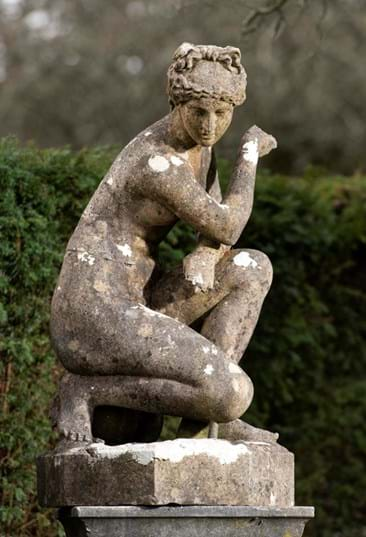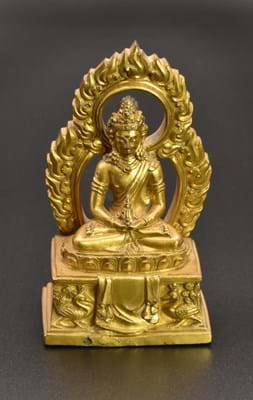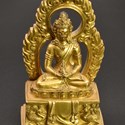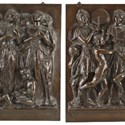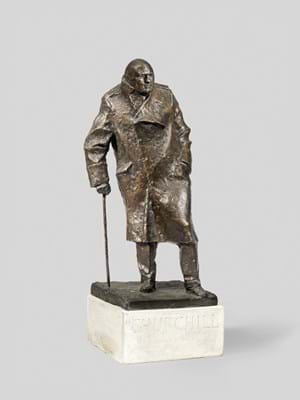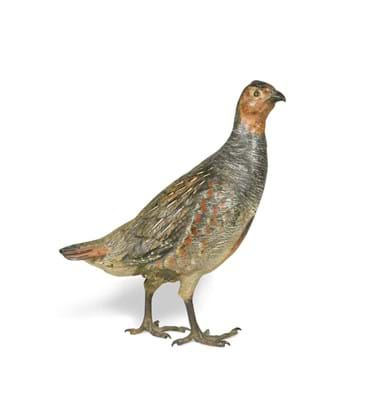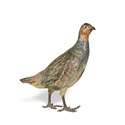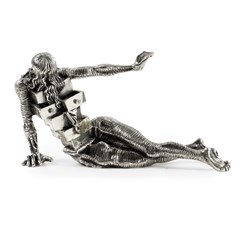Five things to keep in mind when buying sculpture at auction
From military monuments to ancient fertility figures, carved marbles to kinetic art, the category of sculpture is almost infinitely broad and intriguing.
This Austin and Seeley composition stone figure after the crouching Venus, a Hellenistic sculpture now in the British museum, is a mid 19th century garden statue. Felix Austin bought a number of moulds from a defunct firm in 1928 and created figures with them using his own formula for artificial stone, which was hard wearing and highly prized. This figure was offered at Summers Place Auctions in May 2021 and sold for £5800.
Those interested in buying sculpture will need a place to display them – anywhere from a mantlepiece to sprawling grounds will do – and the means to care for them. Beyond that, there are a few key points to keep in mind.
It's important to know what you're looking at
There are many different types of sculpture and with the development of plastic art in the 20th century, pretty much any work concerned with the three-dimensional form can be categorised as a sculpture. However, traditional forms are fairly easy to recognise if diverse. Materials used to make them include wood, bronze, ceramic and stone. There are two basic types: free standing (in the round) and those that are adjoined to a background surface (relief).
Many of the sculptures on the market today were made specifically as works of art. However, their purposes do vary. Some were once sacred objects. Others were made as garden ornaments, practical objects, chess men, decorative elements on tableware or clocks. It’s advisable to know the original purpose of a piece, as it can help inform your judgment about display and price.
It’s also important to know what materials went into making a sculpture – it’s the key to assessing both its care and its quality.
Make sure to read the catalogue description to get a good idea of what you are about to bid for. Better still, forget the training you’ve had during years of museum visits. Visit the auction house to inspect it in person and (as long as the auctioneer is happy for you to do so) get your hands on it.
Know your budget
Sculptures are generally bigger, more difficult to exhibit and trickier care for than pictures. Most people plumping for a sculpture collection have lots of space, so in general the audience is smaller and that means prices can be lower. That doesn’t mean cheap, though. Though hammer values do often stretch into the millions, a top shelf work can be had for a mid-six-figure sum.
The most expensive sculpture on record is Alberto Giacometti’s L’Homme qui marche I, which went for $104.3 at Sotheby’s London in 2010. The second and third places are also Giacomettis, with the fourth place going to a Jeff Koons balloon sculpture. You might not have that budget in mind, but it’s interesting to note that the record for a sculpture is only a quarter of that pulled in by the most expensive painting (Leonardo da Vinci’s Salvator Mundi).
For us mere mortals, there are plenty of lower-value but high-quality works to be found at auction every day.
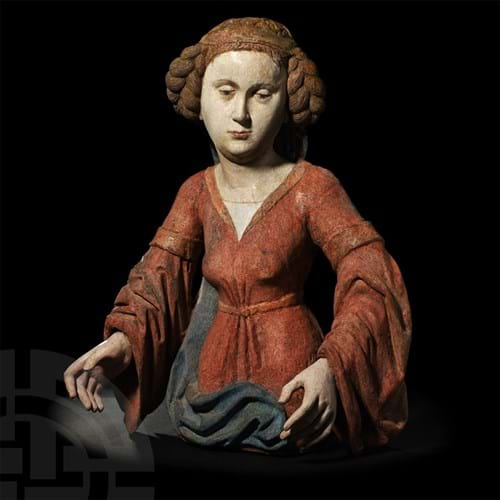
TimeLine Auctions offered this carved and painted half-figure of a woman in February 2022. Made in Nuremberg c.1500-50, it depicts a woman with a doleful expression and high-waisted robe. It was originally part of a Lusterweibchen, a type of rustic chandelier in which a horizontal antler is attached to the sculpture of a young woman (not too dissimilar in composition to a ship’s mascot). The lot sold for £10,000.
Remember – sculptures are generally more demanding that paintings in terms of display, so you may want to devote some of you budget to placing, lighting and caring for them once purchased. Also, it may seem obvious, but have you considered how you will get your sculpture from the saleroom to your home? Sculptures can be heavy, which can push shipping prices up.
Know your key terms
If you’re thinking of wading into the wonderful world of sculpture, it pays to know some key terms.
ALABASTER – a soft light stone used for carving
BRONZE – the most popular material for cast metal sculpture, used as a preferred medium for centuries. Can be referred to as solid bronze, foundry cast or hot cast.
CAST – the creation of a mould into which molten liquid such as bronze is poured.
COLD CAST BRONZE – also known as bonded bronze or bronze resin. A sculpture made of bronze powder mixed with polyester, epoxy or resin and poured into a mould. The process is faster and less expensive than solid bronze casting.
LIMITED EDITION – an example taken directly from an original work and restricted to a specific quantity. The value here is often determined by the size of the edition, e.g. each piece in a 5-work edition is likely to be pricier than that in a 25-work edition.
MAQUETTE – a scale model or draft of an unfinished sculpture.
OPEN EDITION – an unlimited number of works taken from an original by the hand of the artist. More valuable than a reproduction, but less so than a limited edition.
ORIGINAL – a unique, one-off piece created by the artist. Typically these will be the most expensive of their kind (though the total cost still depends on the artist, subject, etc)
PATINA – a thin layer that forms over the surface of metals, wood and other surfaces over time.
RELIEF – a method in which sculpted pieces are bonded to a solid background of the same material
REPRODUCTION – a copy of an original work
TERRACOTTA – earthenware material used in ancient votive figures and Renaissance sculpture and in other times.
VOTIVE – in this context usually a figure offered to a god or goddess at a sacred place.
Old doesn't always mean dusty
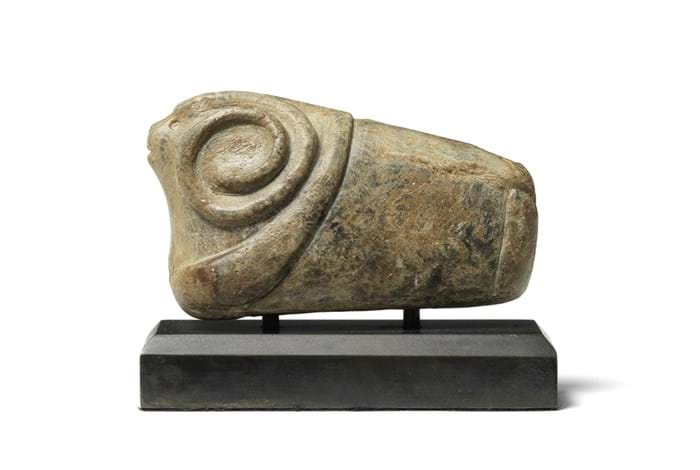
A mouflon is a type of wild horned sheep. This near eastern marble depiction of one is thought to be from Iran c.4th-3rd century BC. It is shown recumbent, its distinctive horns in relief and small stylised facial features incised. It sold for £9000 at Bonhams in December 2021.
It might seem like ancient sculptures would be the most antiquated of all sculpture categories, but in fact they have been reclaimed by contemporary art enthusiasts. Abstract artist Cy Twombly famously filled his modern home with antiquities in Mid-Century New York City. The trend has grown from there, and some art fairs that focus on contemporary art invite antiquities dealers to exhibit too. Stylised or abstract pieces work well, but don’t discount truly classical forms too.
Antiquities carry their own set of challenges relating to matters of provenance and acquisition. Most reputable auctioneers should be able to produce some sort of provenance when selling an ancient sculpture, but make sure you do your research before investing.
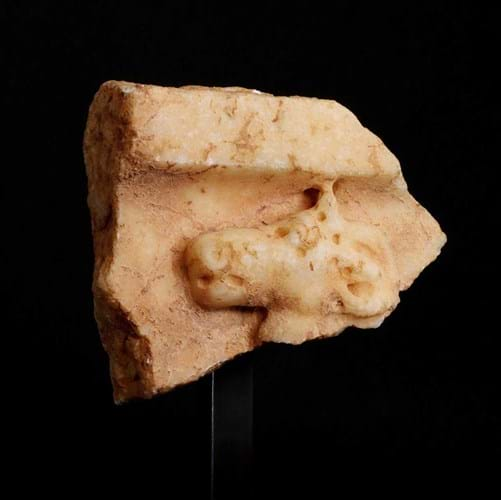
Probably dating to the 3rd or 4th century BC, the ancient Greek marble relief fragment depicts the partial head of a horse. Possibly from a chariot racing scene it sold complete with its modern stand for £180 during an auction at Sworders in November 2022.
In recent years there has also been a growing trend for fragments relating particularly to ancient art works. These are regarded a somewhat poetic, leaving something up to chance in a rigorous artistic field.
Figure out what and where to buy
Decide how much you’d like to spend and use the search facility on thesaleroom.com to find sculpture coming up for sale.
You can filter your search by, among other things, price and by location of the auction house to narrow down your selection.
To research recent prices at auction to see how much different Tudors sold for you can also try out the Price Guide.
If you are new to bidding check out our guides to buying at auction – it’s easy once you know how.
